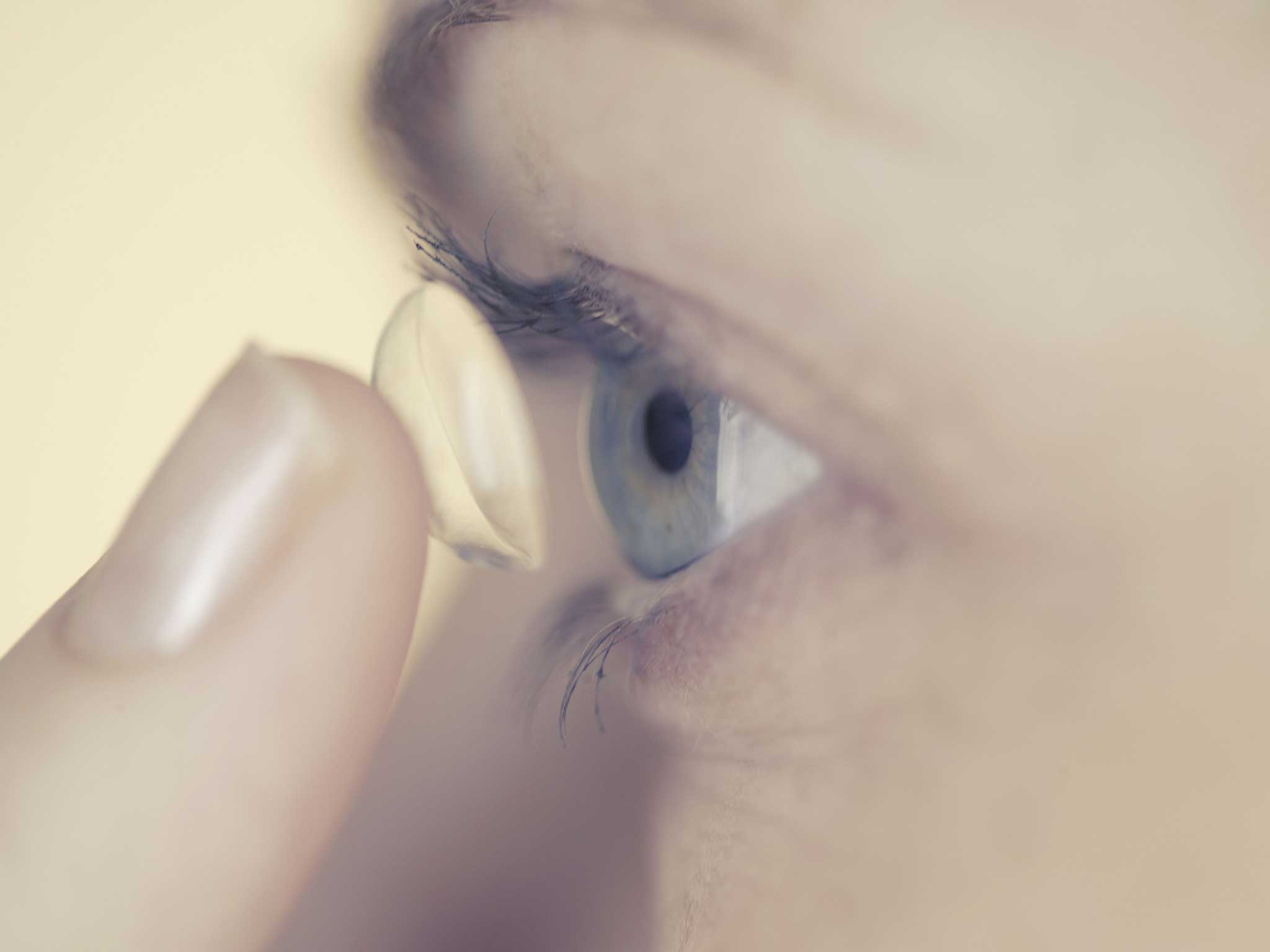Scientists develop prototype contact lenses that allow wearers to zoom in and out
Although initially developed for military use, the lenses may help elderly people suffering from macular degeneration

Scientists are developing new contact lenses that could give wearers superhero-like vision.
The revolutionary lenses would allow individuals to zoom in and out, but which may also offer hope to thousands of elderly people suffering from vision loss.
The prototype lenses, presented at the American Association for the Advancement of Science’s yesterday in San Jose, California, contain tiny aluminium telescopes that would interact with a pair of specially designed glasses to allow you to toggle between normal and ‘zoomed in’ viewing.
The operating instructions tell users to wink the right eye to zoom and the left to zoom out.
The lenses, which were first developed with the US Defence Advance Research Projects Agency as super-thin cameras for aerial drones, have been retooled as a possible solution for those with age-related macular degeneration.
Macular degeneration is when the light receptors on the inner surface of the eye are lost, resulting in blurred central vision. This can make performing normal talks – such as reading – next to impossible.
Eric Tremblay, from the Swiss Federal Institute of Technology in Lausanne, said: “We think these lenses hold a lot of promise for low vision and age-related macular degeneration.
“At this point, it is still research but we are very hopeful it will eventually become a real option for people with age-related macular degeneration,” Mr Tremblay told the Daily Mail.
However, before the lenses can be rolled out scientists need to create a lighter, more ‘breathable’, version.
The rigid prototypes, which still allow light through the centre of the lenses, are bigger and thicker than traditional lenses but surrounded by mirrors.
It is these mirrors that provide the ‘superhero’ elements of the contact lenses. By bouncing the light around the view – as seen by the wearer – is magnified.
The spectacles would control the level of magnification.
Subscribe to Independent Premium to bookmark this article
Want to bookmark your favourite articles and stories to read or reference later? Start your Independent Premium subscription today.

Join our commenting forum
Join thought-provoking conversations, follow other Independent readers and see their replies